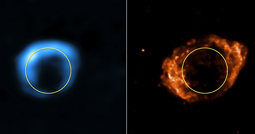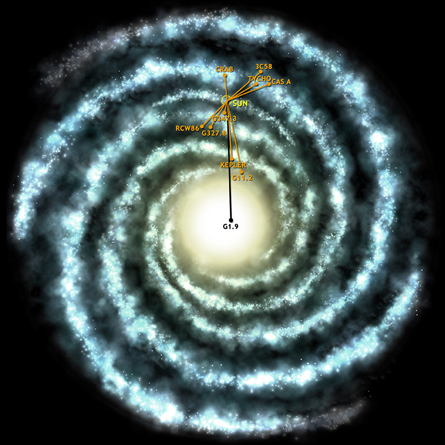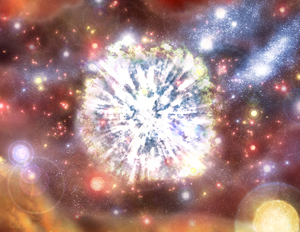When it comes to exploding stars, or supernovas, the Milky Way galaxy appears to be running an embarrassing deficit. On average, galaxies rack up two to three such celestial blasts per century, but 1680 had been the last time light from such an explosion in our galaxy reached Earth.



Astronomers are now heartened to discover a member of the missing population — the remnant of the youngest known Milky Way supernova ever seen from Earth. Radiation from the explosion would have first arrived at our planet much more recently, only 140 years ago.
Hidden behind a thick veil of gas and dust toward the center of the galaxy, the supernova wasn’t visible to observers back in the 1860s. But researchers report that they have detected radio waves and X-rays, which can penetrate the veil, from the remnant of the supernova, dubbed G1.9+0.3.
David Green of the University of Cambridge in England and his colleagues first observed radio waves from the object in 1985, using the Very Large Array near Socorro, N.M. At the time, they estimated that the remnant was between 400 and 1,000 years old. But in 2007, Stephen Reynolds observed the object with NASA’s Chandra X-ray Observatory, and found that the remnant had grown 16 percent bigger since 1985. Such rapid expansion hinted that the remnant was much younger than Green thought.
To make sure, the researchers reobserved the remnant with the VLA this past March and directly compared the new radio image with the one taken 23 years earlier. The comparison enabled the team to calculate the expansion velocity of the remnant and trace back in time to when the supernova must have erupted.
G1.9+0.3 is the youngest known supernova remnant seen from Earth, Reynolds of North Carolina State University in Raleigh and Green announced on May 14 during a NASA telephone briefing. Further details will appear in an upcoming Astrophysical Journal Letters and the Monthly Notices of the Royal Astronomical Society.
Because a young remnant is still interacting with the immediate surroundings of the star that blew up, “it can provide important information on the evolution leading up to the explosion,” notes Roger Chevalier of the University of Virginia in Charlottesville.
Young remnants “still have the signature of the explosion mechanism,” undiluted by expansion into surrounding gas, notes Robert Kirshner of the Harvard-Smithsonian Center for Astrophysics in Cambridge, Mass. “For young objects like this one, you’re actually getting to see the rock that made the splash, not the wave that’s going out into the pond.”
Hand in hand with being young, G1.9+0.3 is small, only about 12 light-years in diameter. It also has the highest expansion speed of any known Milky Way remnant — some 14,000 kilometers per second — and is still brightening at radio wavelengths, notes Green. The remnant’s electrons have the highest energy of any Milky Way remnant. The electrons, which produce both the radio and X-ray emissions, have energies many times higher than those that can be generated by the world’s most powerful particle accelerators.
“There should be even younger supernova remnants in our galaxy awaiting our identification,” Green says. Paradoxically, it’s harder to find supernovas in our own galaxy than in faraway ones, because Earth lies within the dusty plane of the Milky Way. Most of the Milky Way remnants, like G1.9+0.3, will probably be too shrouded in dust to be seen in visible light at the time of their explosion, but current radio and X-ray telescopes, along with particle detectors that can record the initial rush of neutrinos, should be able to catch these explosions as they erupt or soon after, he notes.







